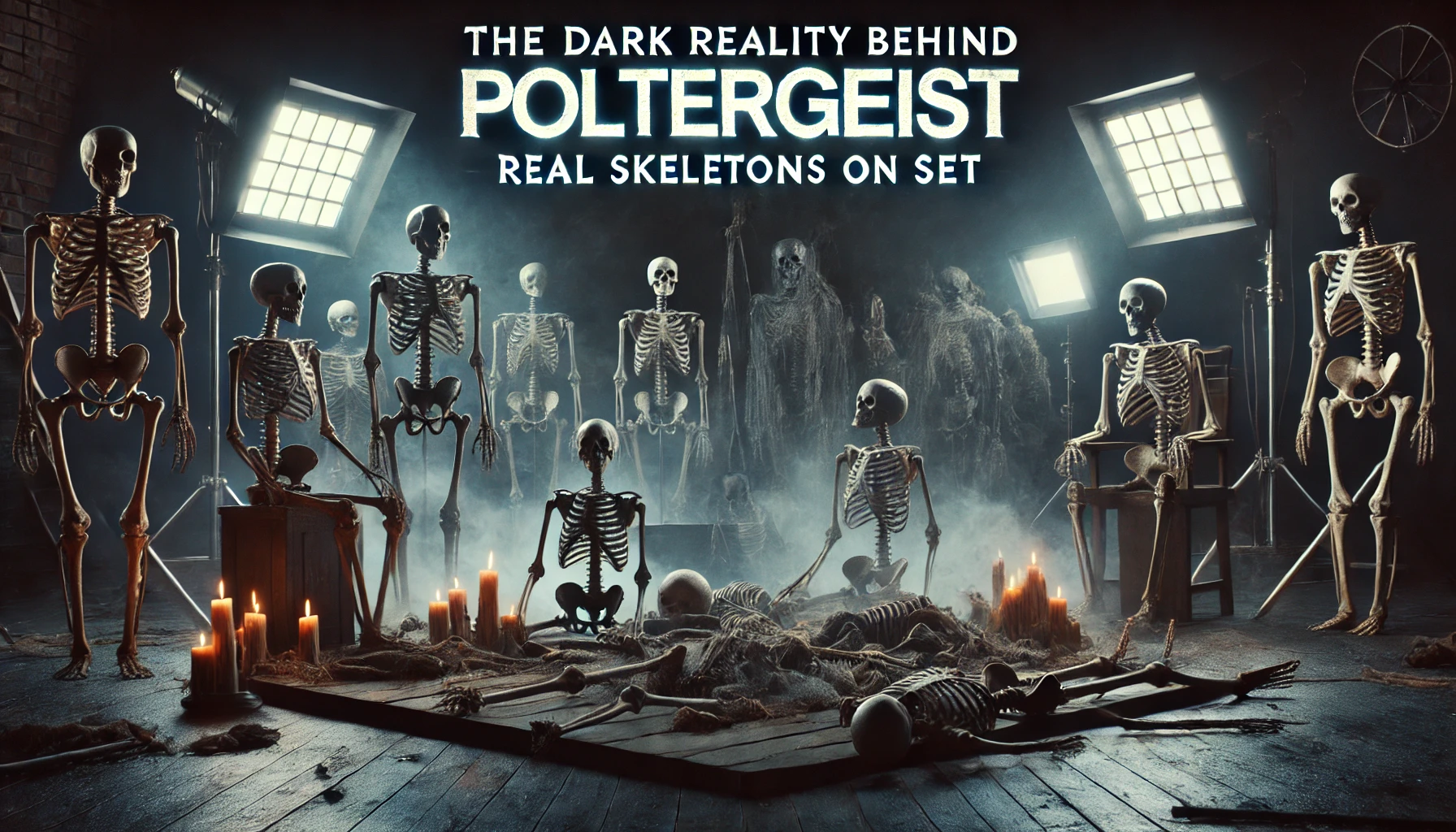The Dark Reality Behind "Poltergeist": Real Skeletons on Set

The 1982 horror classic "Poltergeist," directed by Tobe Hooper and produced by Steven Spielberg, has been a staple in the genre for decades. Known for its gripping story, impressive special effects, and spine-chilling atmosphere, the film has another, darker claim to fame: the use of real human skeletons as props. This revelation has sparked debates about ethics in filmmaking and added a new layer of eeriness to the film.
The Origins of the Claim
Rumors began swirling soon after "Poltergeist" hit theaters. The infamous pool scene, where JoBeth Williams' character, Diane Freeling, encounters skeletons, was particularly under scrutiny. Fans and critics alike speculated that the skeletons in this scene were not props but actual human remains. These claims were largely anecdotal until cast members and crew, including Williams herself, began to speak out.
The Unsettling Truth
In an interview, JoBeth Williams revealed her discomfort with the skeletons on set, believing them to be real. This claim was later supported by Craig Reardon, the special effects makeup artist for the film. Reardon disclosed that real skeletons were used because they were cheaper than creating realistic replicas. These skeletons, initially intended for educational purposes, were modified to appear more gruesome and decayed.
Spielberg and the Crew's Response
The use of real skeletons was confirmed by Steven Spielberg and other crew members, leading to a range of reactions. Some crew members were deeply disturbed, feeling it was disrespectful and unethical, while others viewed it as a practical and cost-effective solution. This decision, driven by the desire for authenticity and budget constraints, sparked a moral debate within the film industry.
Impact on the Film Industry
The revelation that real skeletons were used in "Poltergeist" had a significant impact on the film industry. It raised ethical questions about the treatment of human remains and the lengths to which filmmakers should go for the sake of realism. This controversy led to stricter regulations and guidelines, emphasizing the use of synthetic materials and ensuring respectful treatment of any human remains used in films.
Advances in Special Effects Technology
Today's film industry benefits from advanced special effects technology, such as CGI and animatronics, which provide realistic visuals without ethical concerns. These advancements allow filmmakers to create terrifying and believable scenes without resorting to the use of real human remains. The controversy surrounding "Poltergeist" underscores the importance of these technological advancements in maintaining ethical standards in filmmaking.
The Emotional Toll on Cast and Crew
The decision to use real skeletons had a profound emotional impact on the cast and crew of "Poltergeist." The eerie atmosphere on set and the knowledge that they were working with actual human remains created a lasting sense of unease. Actor Will Sampson, who appeared in "Poltergeist II," was so disturbed by the residual energy on set that he performed an exorcism to cleanse the space.
The Myth of the "Poltergeist" Curse
Adding to the film's eerie legacy is the so-called "Poltergeist curse." Several cast members met tragic ends, fueling speculation about a supernatural curse linked to the film. Dominique Dunne, who played the eldest daughter, was murdered shortly after the film's release. Heather O'Rourke, the young actress who played Carol Anne, died at the age of twelve due to a misdiagnosed illness. Julian Beck and Will Sampson, both of whom appeared in the sequel, also died under tragic circumstances. While these events are likely coincidental, they contribute to the film's haunted reputation.
The Legacy of "Poltergeist"
"Poltergeist" remains a seminal film in the horror genre, but its legacy is forever intertwined with the ethical controversy surrounding the use of real skeletons. This aspect of the film's production serves as a reminder of the importance of ethical considerations in filmmaking. It also highlights the need for transparency and responsibility in the industry, ensuring that the pursuit of realism does not come at the expense of respect for human dignity.
Lessons for Future Filmmakers
The story of "Poltergeist" serves as a cautionary tale for future filmmakers. It emphasizes the need to balance creativity with ethical integrity and respect for all individuals, living or deceased. The controversy surrounding the film encourages emerging filmmakers to think critically about their choices and the potential impact on both their audience and those involved in the production.
Conclusion
The use of real skeletons in "Poltergeist" adds a chilling dimension to an already terrifying film. This revelation has sparked important conversations about ethics in filmmaking and the lengths to which artists should go for the sake of realism. As the film industry continues to evolve, it is crucial to remember the lessons learned from "Poltergeist" and strive for a balance between creative expression and ethical responsibility. The legacy of "Poltergeist" will always be marked by its groundbreaking special effects and its controversial production choices, serving as a reminder of the complex interplay between art and ethics in the world of cinema.
"Head over to Creative Released for comprehensive insights on 'The 1982 Movie Poltergeist Used Real Skeletons As – Tymoff' and other captivating topics!"